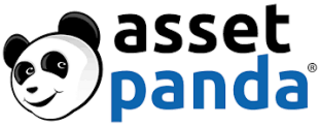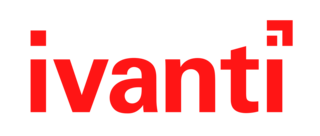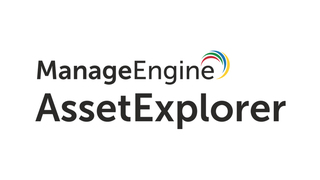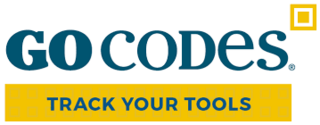Best It Asset Management Software
Have you ever yearned for a software program to keep track of all your software programs? Yearn no more! IT asset management software tracks and monitors basically everything that falls under your IT department's umbrella. From Slack to Outlook to Asana (oh my!), IT asset management software has your back.
It also tracks your laptop, your laptop's warranty, service agreements and critical IT infrastructure. You know, the type of stuff that your company would fall apart without. When we said everything, we meant everything.
To help you pick the right IT asset management software for your needs, we've reviewed five of the best IT asset management software companies and three that didn't quite make the "best" cut. We called out their strengths, weaknesses, unique selling points and more.
Our Top Picks For Best IT Asset Management Software
- MMSoft Pulseway: Best for Mobile Capabilities
- Asset Panda: Best Cloud-Based Solution
- Ivanti IT Asset Management: Best for Custom Reporting
- ManageEngine AssetExplorer: Best for Complete Visibility
- GoCodes: Best for Inventory Management
Best IT Asset Management Software Reviews
Why We Chose It: Unlike many of its competitors, MMSoft Pulseway started life as an app for mobile devices. It brings robust capabilities and a strong feature set to both its Android- and iOS-compatible apps.
Not many IT asset management software systems make you feel right at home on your tablet or smartphone device, but MMSoft Pulseway manages to pull off the feat with ease. View a report, access remote support or monitor SNMP devices all through the MMSoft app without sacrificing functionality.
MMSoft Pulseway's pricing model relies on an a-la-carte system. Select your total number of devices and tack on any desired security add-ons, such as third-party patching, ransomware detection and endpoint detection. This can quickly add up, although MMSoft Pulseway does offer built-in price breaks for larger orders.
Realistically, you're probably going to want to call a salesperson for a custom quote. Take advantage of its 14-day free trial to try before you buy.
MMSoft Pulseway wins praise for its modern and intuitive user interface. Navigation is simple and routine tasks such as remote desktop access is a breeze. Its real-time notifications and status updates let you stay on top of important dates, and its granular control options let you choose the automatic notifications that matter most to you.
Unfortunately, its reporting features aren't quite as robust. It suffers from a distinct lack of customization and the ability to make reports of your own. Customer reviews taken from trusted third-party platforms show generally high levels of satisfaction with the service. Positive reviews rave about high levels of customer support while more negative reviews center on missing features.
Why We Chose It: Asset Panda offers a rich IT asset management feature set available completely through the cloud.
Cloud-based solutions offer companies more flexibility than on-premises software. For smaller companies, cloud-based software lets them access greater computing capabilities than they'd otherwise be able to afford. Larger companies may prefer the ability to quickly up- or downscale their holdings. Asset Panda fits neatly within both paradigms. Its flexible pricing options and its full range of features made it our top pick for cloud-based solutions.
Asset Panda is one of the more affordable IT asset management software systems out there. Its scalable pricing model starts at 250 supported assets and moves up to 5,000 plus. All purchases support unlimited users and unlimited unlocked configuration tools. Expert onboarding and third-party integrations are available for an added fee.
The Asset Panda website advertises discounts for nonprofits, organizations offering educational services and multi-year plan holders. You can try before you buy with a 14-day free trial.
Custom fields and permissions let you tailor Asset Panda to your specific needs. You can download its mobile app from the Apple or Google Play store. Field-technician-friendly features such as barcode scanning, discovery tools, geolocation tools, manual asset additions and mobile file upload make it a solid choice for companies with dispersed operations.
Asset Panda advertises 24/7 online customer support. You can also call between 8:30 AM and 5:30 PM (CST) Monday through Friday. Customer reviews trend positive with multiple mentions of easy file uploads and robust app functionality.
Why We Chose It: Ivanti IT Asset Management comes with over 100 reports already made and ready for deployment. It also gives you the option to create your own queries.
Ivanti offers highly functional software inventory tools that let you perform audits of your company's digital assets. Save your query to your reports dashboard and watch the information roll in. It's easy to change the queries you've already submitted allowing simple fine-tuning and multiple, related data sets. The reports feature high-quality formatting and presentation. You can send out one of your customized reports to your boss or integrate it into your next PowerPoint slide.
Its website doesn't advertise pricing. Instead, you're asked to contact a sales representative for a custom quote. If you're not quite sure that you're ready to take the plunge, Ivanti offers a 45-day free trial. However, because it's not cloud-based, first make sure that your hardware meets the minimum server requirements.
Like the other entries on our list, Ivanti offers a mobile app through the Google Play and Apple app stores. Currently, it holds a low star rating with many complaints about its functionality and user interface. You're probably better off with the desktop version's easy-to-navigate user interface.
Support features include access to an online library, an online forum, multiple web portals and phone support from 8 AM to 8 PM (ET) Monday through Friday. Round-the-clock customer support is available at the highest plan levels.
Most customer reviews are favorable. Positive comments tend to mention Ivanti's powerful features while more negative comments speak to the company's lack of cloud storage.
Why We Chose It: ManageEngine AssetExplorer offers total visibility into the inner workings of your business through its unique relationship mapping tool and ability to work with both networked and non networked devices.
ManageEngine AssetExplorer took our spot for complete visibility due to its comprehensive feature set that lets you manage your entire software and physical asset systems at a glance. Advanced tracking and sorting tools let you locate assets with ease.
Its pricing comes in toward the middle of the pack, although it does offer a stripped-down free plan. You can also take advantage of its 30-day free trial for any of the paid plans.
Its powerful set of tools runs the gamut from software license administration to compliance review to inventory tracking. Small businesses might feel overwhelmed by the learning curve required to master all these features. But larger companies will likely appreciate the feature-rich functionality.
All paid plans come with 24/7 phone support. Online reviews are mostly positive with many mentioning its notification system and vendor database. More negative reviews center largely on its reporting features.
Why We Chose It: GoCodes stands out for its simple yet powerful inventory management toolset. It lets you print your own QR code stickers to remotely manage your physical IT devices from anywhere.
What's the best part about GoCodes remote inventory management solutions? You can apply them to non networked devices as well. GoCodes makes it easy to manage disbursed devices. Once you have your stickers set up, GoCodes lets you manage everything remotely from your online dashboard.
GoCodes is one of the more affordable options on our list. You can choose from a range of plan choices, and it comes with a 15-day free trial. GoCodes lets you pay by the month, or you can take advantage of its annual discount option when you pay for the entire year upfront.
It's important to note that part of its affordability stems from a distinct lack of software tracking tools. GoCodes is very much built with physical IT assets in mind. However, if that fits your needs, it's hard to beat GoCodes for its ease of use, price, and functionality.
GoCodes offers multiple customer support options. You can educate yourself through its help center or contact a customer service agent over the phone or online.
Customer reviews are mostly positive. Users praised the service's customer support and simple setup. However, a few users did mention difficulty with the iOS app.
Other IT Asset Management Software We Considered
We evaluated each IT asset management software system by pricing, features and functionality, ease of use, customer support and customer reviews. The following companies offer quality products, but they failed to make our list because they did not excel in one or more of our criteria areas.
FreshService
FreshService is a popular IT asset management software system that offers affordably priced services and a flexible range of add-on features. It didn't make our list due to its weak user interface design and limited customer support.
Spiceworks IT Asset Management
Spiceworks IT Asset Management is a free program that boasts strong inventory management tools. Ultimately, it failed to make our list due to its lack of advanced features.
UpKeep
UpKeep is an affordably priced software tool that features a broad range of add-ons and stellar mobile functionality. It failed to make our list due to its limited permissions settings, lack of third-party integrations and other shortcomings.
IT Asset Management Software Guide
We compiled this helpful guide to shepherd you through all the essential information you need to know about IT asset management software.
What Is IT Asset Management Software?
In a sense, IT asset management software is exactly what it sounds like. It's a software system that lets you manage IT equipment including other software systems (pretty meta, right?). But that barely scratches the surface. To get a better sense of why this software exists in the first place, let's take a trip back to the dark ages when businesses used (gasp!) Microsoft Excel to keep records.
So, imagine you're working in the IT department for a mega-corp, and you must account for literally hundreds of computers, overhead projectors and all and sundry work devices. On top of all the physical devices you must account for, you also need to keep track of dozens of software licenses.
As you pore over your spreadsheets, you find yourself asking the following questions:
- Is my company getting its money's worth out of every software program it's using?
- Is it cheaper to fix or replace the broken overhead projector?
- When does the warranty on that laptop expire?
- When did we buy the software license for Microsoft Word 365 and how much did we pay?
- Are we using software compliant with the latest data-sharing regulations in all our markets?
These questions are far from exhaustive. Think of it as a sample platter for the type of highly analytical work IT departments have to process regularly. Sure, a spreadsheet model can answer most of these questions, but that entails time-consuming labor with a high potential for error. A single missing Excel cell could cause a company to prematurely replace a perfectly fine laptop. Not to mention IT workers tend to be highly compensated. Paying someone $50 an hour to scrutinize an Excel file just isn't a great use of company resources.
That's where IT asset management comes in. It automates the entire process from the top down. It improves workplace efficiency by reducing human errors and by letting your IT talent move on to more important tasks.
Not all IT asset management software deals with both physical devices and software products and subscriptions. If you want both capabilities, shop around and do your due diligence. Also, it's a good idea to look for software that comes with a robust automatic reminder system and third-party integrations.
How Does IT Asset Management Software Work?
At its heart, IT asset management is just a big database filled with information about various IT assets, such as ongoing software subscriptions and laptop computers. Depending on the type of software you buy, it may gather information about your current IT assets using remote monitoring tools, or you might have to manually input software and device details. Most systems should have both options available.
Other tracking features include software license and software usage tracking. Many systems let you know how much employees are using a given software system and when you need to renew your various licenses. You can use this information to cut unused or underutilized software systems. Considering that software licensing and maintenance-related work account for almost 22 percent of the average IT budget, the potential for cost savings is huge.
Many IT asset management tools also come with built-in contract management features. Automated reminders and compliance tools help companies meet their contractual deadlines.
For physical devices, IT asset management tools often use QR codes or geocaching to maintain a virtual map of where devices are located. This helps prevent theft as well as more benign losses. For example, if an employee leaves behind their company-issued laptop in a coffee shop, a geocaching tool could help the IT department track it down.
IT asset management software commonly helps with inventory tracking tasks and asset life cycle management. The latter term refers to the process of tracking a device from purchase to putting it out to pasture. Asset life cycle management can come in handy when deciding whether to replace or repair a computer. It also helps businesses save money by creating replacement timelines for IT devices.
Types Of Assets Managed
IT asset management software oversees the following four asset classes. Before you dive in, note that some asset classes may overlap for certain items. Rather than think of these as discrete categories, consider them helpful labels for sorting and identifying assets according to distinct needs.
Financial Assets
If it's liquid, intangible and worth money, it's a financial asset.
Here are a few examples from the realm of IT:
- Software licenses
- Maintenance contracts
- IT service agreements
IT asset management software can help you track, manage and get the most from your financial assets. For example, many systems track the expiration date of your maintenance contracts. They can also provide helpful renewal reminders and analytic reports that can help you decide whether you should even bother to renew the contract.
Infrastructure Assets
IT infrastructure has a fairly expansive definition, but in essence, it's made up of hardware and software that help deliver, support and monitor IT services for an organization. Because it includes a large number of IT tools, it would be impossible to write up a complete list of infrastructure assets.
However, some common asset types include:
- Computers
- Servers
- Routers
- Switches
- Customer relationship management (CRM) software
- Enterprise resource planning (ERP) software
- Operating systems
Physical Assets
Physical assets refer to all IT-related devices. Basically, if you can touch it, and it's more complicated than an electric pencil sharpener, it probably falls under this heading. Here are a few common types of physical assets.
- Desktop computers
- Laptops
- Printers
- Routers
- Scanners
- Fax machines
You'll notice that there's a lot of overlap between infrastructure assets and physical assets. However, not every physical asset is an infrastructure asset, and vice versa. Printers, for example, fall squarely under physical assets, but you'd be hard-pressed to find an IT guy willing to claim it's a vital IT infrastructure component.
Software Assets
Software assets are also self-explanatory. Everything from Microsoft Office Word to the clock-in and out app your boss made you download onto your phone to the big, complicated stuff that you're secretly terrified of (i.e., SalesForce) falls into this category. Aside from sending out automated reminders when your licenses are up for renewal and keeping you aware of just what exactly it is you're paying for, IT asset management software has some pretty nifty compliance components.
For example, many software licenses are only good for a set number of users. A manager hell-bent on cost savings might ask two workers to share a license meant for just one person. An IT software asset management system could automatically detect malfeasance and put a stop to it before the manager's decision opens the company up to some serious liability issues.
How We Chose The Best IT Asset Management Software
We used the following parameters to guide our choices when choosing the top IT asset management software companies.
- Pricing: We assessed each software system based on its cost in relation to its capabilities.
- Features and functionality: We looked at each software system's range of features and the quality of its functions.
- Ease of use: We evaluated each software system by the simplicity of navigation and the steepness of its learning curve.
- Customer support: We favored services with high-quality and accessible customer support.
- Customer reviews: We used customer reviews taken from trusted third-party platforms, such as the Better Business Bureau, to help inform our choices.




